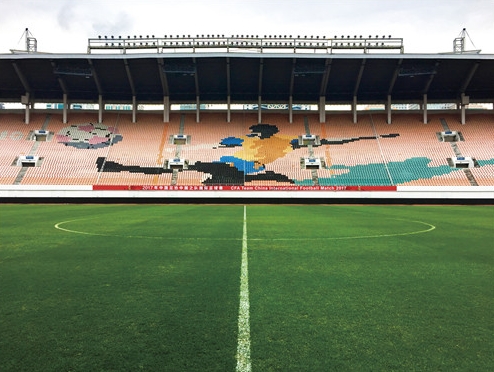The maintenance and management level of football field lawns is very critical to the quality of the football field, its service life and the on-field performance of the athletes. Lawn maintenance and management are important, but the most fundamental thing is to effectively select good grass species that are suitable for local development at the beginning of the lawn construction. At the same time, when establishing the lawn bed, attention should be paid to its drainage function. design. If a professional football field wants to hold a game, the quality of its lawn must meet a certain standard, otherwise the game cannot proceed normally. The formation of a good lawn is controlled by a combination of factors.
The selection of lawn grass species should consider regional characteristics.
The turf factors that affect the quality of football turf sports first include the selection of turf grass species and varieties. Objectively speaking, the current football field lawn does not have dedicated turf grass species like golf greens. It only selects some grass species that are relatively resistant to trampling, strong stress resistance, strong recovery ability, and good elasticity according to different ecological environments in various places.
So how to choose suitable grass species under limited conditions? According to the general standard specifications of the International Football Association (FIFA), the type of lawn planted in football fields should be grass turfgrass.
In temperate areas, tall fescue, bluegrass, and zoysia can be the dominant species. At present, in rainy areas in tropical and hot zones, warm-season lawns such as zoysia grass and bermudagrass are mostly chosen; in transition zones, some heat-resistant varieties of bermudagrass, zoysia grass and tall fescue that are more resistant to cold are generally used; Temperate zones are mostly mixed with different proportions of tall fescue, bluegrass and perennial ryegrass.
In the football turf community, there is a view that “the bed structure of the football field is the most important factor that determines the quality of the football field turf, and its influence is far greater than the level of fertilization or even the choice of grass species.” It can be seen that the prerequisite for maintenance should be the construction and perfection of the football field lawn itself.

When constructing flat beds, attention should be paid to drainage and slope design.
The most important thing to pay attention to in the construction of flat bed is its drainage function. Because the design of the drainage layer has the greatest impact on the sports quality of the football field, they directly affect the soil surface moisture content, soil permeability and root zone soil stability, which in turn affect the surface hardness of the football field, football rebound rate and other properties as well as the properties of the field. have an important impact on service life. So at the beginning of building a flat bed, how to ensure high drainage permeability?
Take the PAT (Prescription Athletic Turf) structure, which is a commonly used football field lawn structure in the world, as an example. It uses probes in the bed and external water supply and drainage pumps to flexibly control the moisture in the soil to the level required by the lawn. The best point, and this structure can force drainage, and its automatic drainage device allows the game to be played in heavy rain.
Artificial drainage in the platform bed can also ensure the smooth progress of the game in the open football field. In addition, an artificial auxiliary heating system is installed in the pitch bed, which can increase the usage rate of the court. Because the heating system ensures that even in cold and arid areas, the lawn can stay green all year round, realizing the dream of year-round use.
On the other hand, the lawn slope design also needs to be paid attention to when constructing the lawn bed. In order for the football field to have good surface drainage capabilities, the football field must maintain a certain surface slope when it is constructed. Experts once believed that in addition to poor drainage, water accumulation in football fields is caused by unreasonable surface slope design or unreasonable construction. The aspect and slope of the football field should be tilted to all four sides from the kick-off point in the center circle, and the slope should not exceed 0.5%. Because the surface slope is too steep, it will affect football training and competition; if the slope is too small, the accumulated water on the surface of the field will not be easily drained out or the drainage will be too slow, affecting the growth of turf grass and the quality of the game.
Post time: Mar-18-2024
